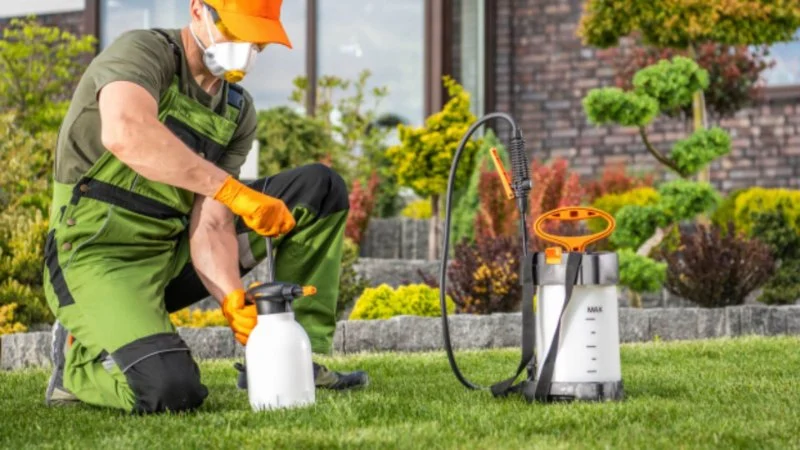
How to Prevent Pest Intrusion via Landscaping
- 1. Understanding the Link Between Landscaping and Pest Intrusion
- 2. Common Pests Encouraged by Landscaping
- 3. Landscaping Tips to Prevent Pests
- 4. Effective Barriers and Natural Solutions for Pest Control
- 5. Real-Life Examples of Pest-Proof Landscaping
1. Understanding the Link Between Landscaping and Pest Intrusion
Landscaping plays a significant role in either attracting or deterring pests. The way you design and maintain your outdoor spaces can directly influence the presence of pests around your home. Overgrown shrubs, tall grass, excessive moisture, and poorly managed plants are all factors that can create a welcoming environment for pests. By understanding the relationship between your landscaping and pest problems, you can take steps to proactively reduce the risk of an infestation.
The good news is that by making a few adjustments to your landscaping habits, you can reduce the likelihood of pests like mosquitoes, rodents, and insects from intruding into your home. In this article, we will explore practical landscaping tips that can help you achieve a pest-free yard.
2. Common Pests Encouraged by Landscaping
Certain landscaping features or practices can inadvertently attract pests. Here are some of the most common pests that might thrive due to your landscaping choices:
- Rodents: Mice, rats, and squirrels are drawn to overgrown vegetation, piles of leaves, and dense shrubs that provide shelter and food sources. They often burrow and nest in these areas.
- Insects: Mosquitoes, ants, termites, and other insects thrive in moist, shaded areas. Over-watering plants or having standing water in containers or bird baths creates perfect breeding grounds for mosquitoes.
- Wood-Destroying Pests: Carpenter ants and termites are attracted to rotting wood, which is commonly found in decaying tree stumps, old mulch, or wooden fences that are exposed to moisture.
- Weeds: Weeds like clover and dandelions can attract pests like ants, which use them as nesting sites. A poorly maintained lawn or garden provides easy access to these pests.
3. Landscaping Tips to Prevent Pests
Here are several effective landscaping tips that can help prevent pests from invading your home:
- Trim and Maintain Plants: Regularly trim trees, shrubs, and bushes to eliminate hiding spots for pests. Keeping your plants well-maintained prevents overgrowth that could serve as shelter for rodents and insects.
- Use Mulch Properly: Mulch is great for plant health, but it can also attract pests if not used correctly. Avoid piling mulch too high around plants, as it can trap moisture and attract termites and ants. Instead, apply a thin layer of mulch to prevent moisture build-up and ensure good air circulation around your plants.
- Remove Standing Water: Standing water is a breeding ground for mosquitoes. Regularly empty water from flower pots, bird baths, and gutters to avoid attracting mosquitoes and other water-loving pests.
- Seal Entry Points: Pests can easily move from your yard into your home through gaps in doors, windows, and walls. Ensure that your home’s exterior is well-sealed and that there are no easy access points for pests.
- Plant Pest-Repellent Plants: Certain plants naturally repel pests. For example, lavender, citronella, marigolds, and mint are known for their ability to deter mosquitoes and other insects. Incorporating these plants into your landscaping can act as a natural barrier against pests.
4. Effective Barriers and Natural Solutions for Pest Control
In addition to traditional landscaping tips, there are several natural and physical barriers you can incorporate to keep pests at bay:
- Physical Barriers: Install fencing or mesh netting around vegetable gardens or plants that are prone to pest infestation. This prevents pests like rodents, rabbits, and deer from accessing your plants.
- Natural Pesticides: Consider using organic and non-toxic insect repellents, such as neem oil or diatomaceous earth. These natural substances are effective at controlling pests without harming the environment or other beneficial creatures in your yard.
- Encourage Beneficial Insects: Certain insects, like ladybugs, spiders, and predatory beetles, help keep harmful pests in check. By planting flowers like yarrow or fennel, you can attract these helpful creatures to your garden, reducing the need for chemical pesticides.
- Proper Irrigation: Over-watering your plants can create an environment for pests like mosquitoes. Installing a drip irrigation system can ensure that your plants get the right amount of water without contributing to moisture problems that attract pests.
5. Real-Life Examples of Pest-Proof Landscaping
Real-life examples of pest-proof landscaping highlight how effective these strategies can be. In one case, a family in the Midwest used a combination of trimming overgrown bushes, planting pest-repellent plants, and maintaining a dry yard to keep mosquitoes at bay. By installing a few bird baths and ensuring they were emptied regularly, they also drastically reduced mosquito populations in their yard.
Another successful case involved a homeowner in the Northeast who had issues with rodents entering the attic. After creating a physical barrier by adding mesh around vents and sealing cracks, they also applied diatomaceous earth along the foundation of their home. This not only deterred rodents but also eliminated any pests that tried to get in.
These examples show that with a little effort, your landscaping can play a significant role in preventing pests from intruding into your home.
If you’re looking for the best pest control products or need expert advice on landscaping to prevent pests, visit PestControlHub for a wide range of solutions tailored to your needs.








 Wildlife Resolutions4.0 (443 reviews)
Wildlife Resolutions4.0 (443 reviews) Pest Marshals of Toledo5.0 (2 reviews)
Pest Marshals of Toledo5.0 (2 reviews) LS Rodent Proofing & Pest Control Service5.0 (4 reviews)
LS Rodent Proofing & Pest Control Service5.0 (4 reviews) Best Termite & Pest Control4.0 (16 reviews)
Best Termite & Pest Control4.0 (16 reviews) Varment Guard Wildlife Services5.0 (28 reviews)
Varment Guard Wildlife Services5.0 (28 reviews) Pestban Inc4.0 (394 reviews)
Pestban Inc4.0 (394 reviews) How to Use Monitors to Detect Pest Entry: A Comprehensive Guide
How to Use Monitors to Detect Pest Entry: A Comprehensive Guide How to Predict Which Pests Will Invade Next – Smart Pest Forecasting for the U.S.
How to Predict Which Pests Will Invade Next – Smart Pest Forecasting for the U.S. How to Conduct a Pest Risk Assessment at Home – Expert Guide
How to Conduct a Pest Risk Assessment at Home – Expert Guide How to Block Pest Entry Around Deck Joists: Effective Solutions
How to Block Pest Entry Around Deck Joists: Effective Solutions How to Safely Use Fumigation Methods: A Comprehensive Guide for Homeowners
How to Safely Use Fumigation Methods: A Comprehensive Guide for Homeowners Why Pests Are More Active After Rain: Understanding the Link Between Weather and Pest Behavior
Why Pests Are More Active After Rain: Understanding the Link Between Weather and Pest Behavior